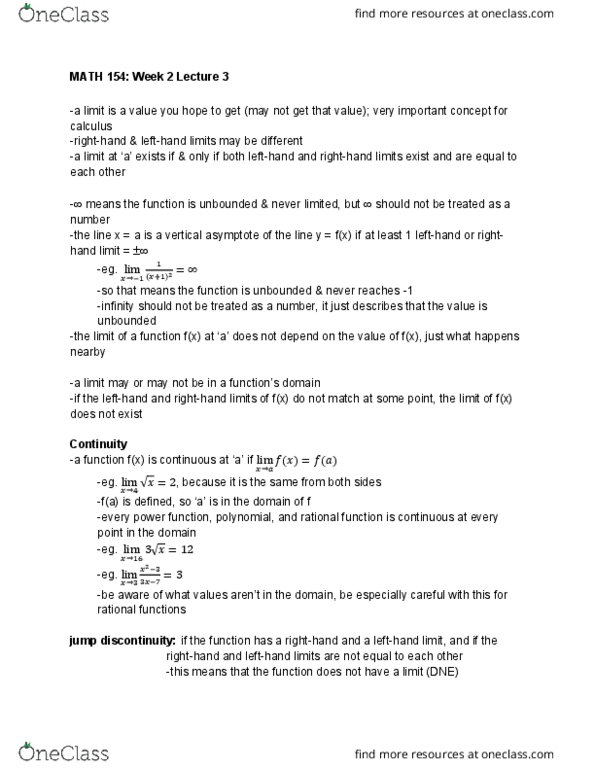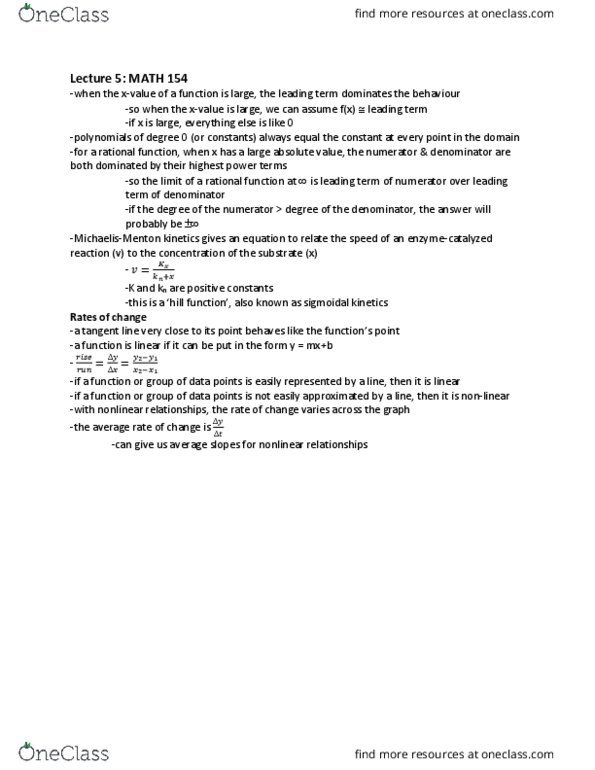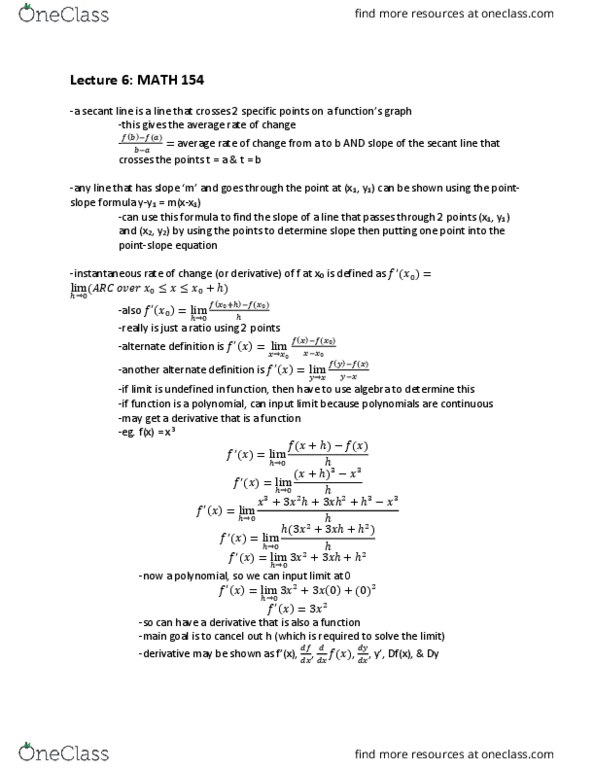MATH 154 Lecture 6: Lecture 5: Limits & Average Rate of Change
MATH 154 verified notes
6/38View all
Document Summary
When the x-value of a function is large, the leading term dominates the behaviour. So when the x-value is large, we can assume f(x) leading term. If x is large, everything else is like 0. Polynomials of degree 0 (or constants) always equal the constant at every point in the domain. For a rational function, when x has a large absolute value, the numerator & denominator are both dominated by their highest power terms. So the limit of a rational function at is leading term of numerator over leading term of denominator. If the degree of the numerator > degree of the denominator, the answer will probably be . Michaelis-menton kinetics gives an equation to relate the speed of an enzyme-catalyzed reaction (v) to the concentration of the substrate (x) If a function or group of data points is easily represented by a line, then it is linear.





